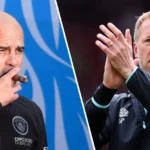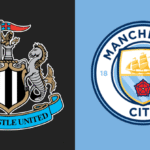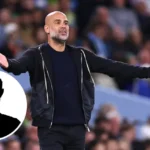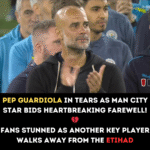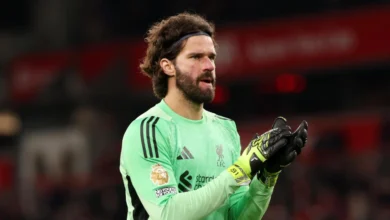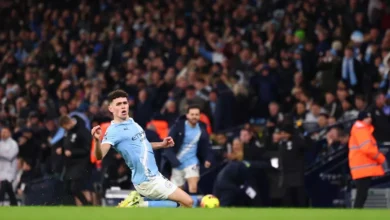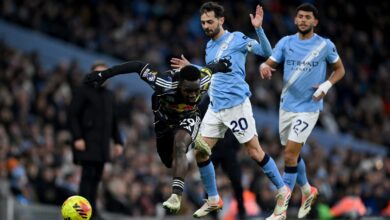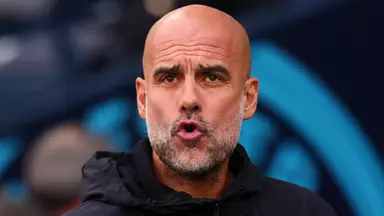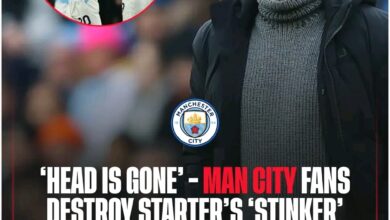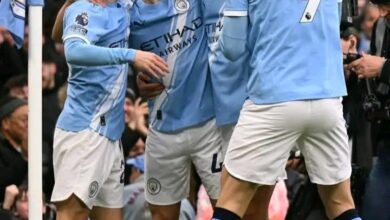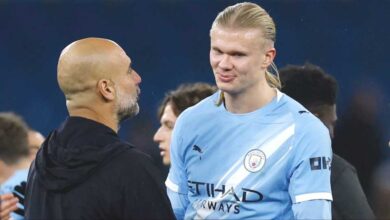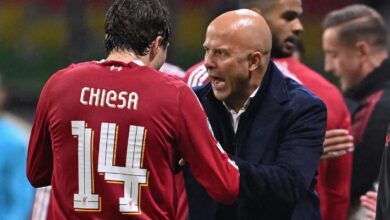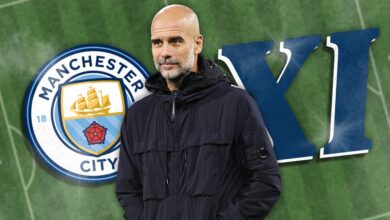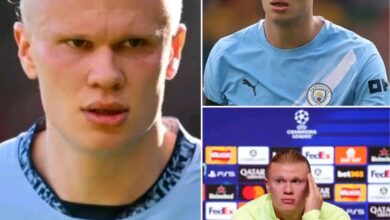The wild Man City and West Ham which could boost two star’s prospects ahead of the 2026 World Cup
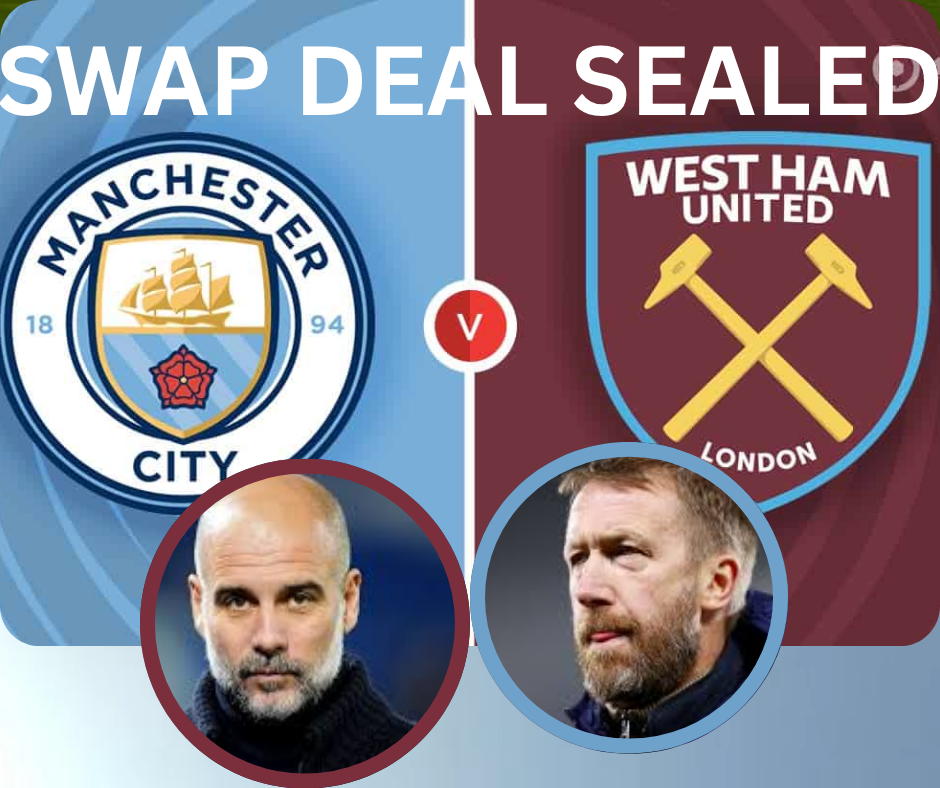
Jack Grealish’s tenure at Manchester City presents one of modern football’s most fascinating paradoxes. On one hand, the England international has achieved virtually everything a footballer could dream of during his time at the Etihad Stadium. His trophy cabinet gleams with three Premier League titles, an FA Cup triumph, the coveted Champions League crown, the UEFA Super Cup, and the prestigious 2023 Club World Cup. These achievements represent the pinnacle of club football success, marking Grealish as one of the most decorated English players of his generation.
Yet beneath this glittering array of silverware lies a more complex narrative – one that speaks to the challenges of expectation, adaptation, and the weight of a record-breaking transfer fee. When Manchester City shattered the British transfer record by paying Aston Villa £100 million for Grealish’s services in August 2021, they weren’t just acquiring a player; they were making a statement of intent about their ambitions and their belief in his potential to elevate their already formidable squad to new heights.
The statistical reality of Grealish’s City career tells a story that sits uncomfortably alongside his trophy haul. With 17 goals and 23 assists across 132 appearances, these numbers represent a return that, while respectable in isolation, inevitably invites scrutiny when viewed through the lens of his unprecedented price tag. For a player who commanded such a substantial investment, expectations were naturally sky-high, with many anticipating the kind of transformative impact that justifies breaking transfer records.
The Weight of Expectations and System Integration
The transition from Aston Villa to Manchester City represented far more than a simple change of clubs for Grealish. At Villa Park, he had been the creative fulcrum, the player around whom the entire team’s attacking philosophy revolved. His freedom to drift across the front line, to take risks, to attempt the spectacular, and to express his natural flair were not just tolerated but actively encouraged. Villa’s tactical setup was designed to maximize Grealish’s unique skill set, allowing him to operate in the spaces where he felt most comfortable and effective.
Manchester City’s system under Pep Guardiola, while undoubtedly successful, demands a different kind of discipline and tactical awareness. The Spanish manager’s meticulous approach to positional play, his emphasis on maintaining width and structure, and his preference for calculated risks over individual brilliance created an environment that, while conducive to collective success, potentially constrained some of Grealish’s natural instincts.
The adaptation process has been gradual and, at times, visibly challenging. Guardiola’s system requires players to think collectively first, to understand their role within the intricate machinery of the team’s tactical framework. For a player accustomed to being the primary creative outlet, this adjustment represented a fundamental shift in mindset and approach to the game.
International Career and World Cup Aspirations
Perhaps equally concerning for Grealish’s long-term prospects is his absence from the England squad throughout 2025. International football represents not just personal pride but also a crucial platform for maintaining visibility and relevance in the global football consciousness. With the 2026 World Cup in North America looming on the horizon, Grealish finds himself in a race against time to reclaim his place in Gareth Southgate’s plans.
The competition for places in England’s attacking positions has intensified significantly over recent years. Players like Phil Foden, Bukayo Saka, Marcus Rashford, and emerging talents have all staked claims for the limited spots available in the squad. For Grealish, who earned 39 caps and was once considered an automatic selection, the current situation represents a significant decline in his international standing.
The World Cup in North America presents a unique opportunity for redemption and recognition on the global stage. At 29 years old, this tournament could represent Grealish’s final realistic chance to make a significant impact at a major international competition. The urgency of this timeline adds another layer of complexity to his current club situation and potential transfer considerations.
Market Reality and Financial Complexities
The transfer market reality surrounding Grealish presents numerous challenges for all parties involved. Everton and West Ham United have emerged as the most credible suitors, but the financial dynamics of any potential deal are extraordinarily complex. Manchester City’s initial investment of £100 million, combined with Grealish’s substantial salary package, creates a financial puzzle that few clubs can realistically solve.
Everton, despite their historical pedigree and passionate fanbase, are operating under significant financial constraints. Their recent struggles with Financial Fair Play regulations and the need to balance their books make a permanent deal for Grealish seem almost impossible under current circumstances. The club’s limited transfer budget and wage structure would require significant restructuring to accommodate a player of Grealish’s financial expectations.
West Ham United, while potentially better positioned financially following their recent transfer activities and European competitions, also face substantial challenges. The departure of Mohamed Kudus to Tottenham Hotspur for £60 million has created both a tactical vacancy and financial breathing room, but even with this influx of funds, matching Grealish’s current earnings while meeting City’s valuation expectations remains a formidable obstacle.
The West Ham Connection: A Perfect Storm of Opportunity
The potential move to West Ham United presents perhaps the most intriguing scenario for Grealish’s career renaissance. The London club’s current tactical and statistical profile suggests they could benefit enormously from a player of Grealish’s creative capabilities, even if he’s operating below his peak performance levels.
West Ham’s offensive struggles during the previous season were well-documented and statistically significant. As the sixth-lowest scorers in the Premier League, they clearly lacked the creative spark necessary to break down organized defenses consistently. Their shooting accuracy of just 29% represented the worst in the league, highlighting a fundamental issue with chance creation and conversion that Grealish’s presence could potentially address.
The statistic that West Ham managed only three take-ons leading to goals, joint-worst in the league, particularly underscores where Grealish could make an immediate impact. His ability to beat players in one-on-one situations, to create space where none previously existed, and to provide the kind of unpredictable attacking threat that can unlock tight games represents exactly what West Ham’s tactical approach has been missing.
David Moyes’s tactical philosophy at West Ham has always emphasized structure and organization, but the addition of a player like Grealish could provide the creative freedom and flair that would elevate their attacking play to a new level. The departure of Kudus creates an obvious vacancy on the left side of their attack, a position where Grealish has shown he can be most effective when given the tactical license to drift and create.
The Loan Solution and Its Strategic Implications
Given the financial complexities involved, a loan arrangement appears to be the most pragmatic solution for all parties involved. For Manchester City, a loan would allow them to reduce Grealish’s salary burden while maintaining their asset value and potentially providing him with the regular playing time necessary to rediscover his best form. This approach would also keep their options open for future summers, when the transfer market dynamics might be more favorable.
For potential suitors like West Ham, a loan arrangement would provide access to a player of proven Premier League quality without the long-term financial commitment that a permanent transfer would require. This structure would allow them to evaluate Grealish’s fit within their tactical system and his ability to adapt to their playing style before making any permanent commitments.
However, the viability of such an arrangement from Manchester City’s perspective remains questionable. Pep Guardiola’s squad management approach typically requires all players to be fully committed to the project, and allowing a high-profile player to leave on loan could set an undesirable precedent for other squad members facing similar situations.
The Lucas Paquetá Connection: A Potential Game-Changer
Perhaps the most intriguing subplot in this entire narrative involves the potential connection to Lucas Paquetá’s situation at West Ham. The Brazilian midfielder has been a long-term target for Manchester City, with Pep Guardiola having pursued him for two consecutive summers before investigations into alleged betting regulation breaches complicated any potential transfer.
The resolution of Paquetá’s legal situation, expected in the coming weeks, could dramatically alter the landscape for both players. If cleared of all charges, Paquetá would likely become available for transfer, and Manchester City’s historical interest suggests they would be immediate contenders for his signature. The previous £85 million accepted bid demonstrates the level of City’s commitment to acquiring the Brazilian’s services.
This scenario opens up the fascinating possibility of a player exchange or connected transfer arrangement. Paquetá, at 27, is two years younger than Grealish and represents a different tactical profile that might better suit Guardiola’s current tactical evolution. His ability to operate in multiple midfield positions, his defensive work rate, and his technical consistency align more closely with City’s current tactical requirements.
For West Ham, losing Paquetá would create a significant void in their midfield creativity, but acquiring Grealish could provide a different but equally valuable creative outlet in advanced positions. The financial dynamics of such an arrangement could potentially work for all parties, with City upgrading their midfield options while West Ham maintains their creative capabilities through a different tactical approach.
Confidence, Form, and the Psychology of Performance
Beyond the tactical and financial considerations lies the crucial psychological dimension of Grealish’s current situation. Confidence in professional football is a fragile commodity, and there are clear signs that his self-belief has been affected by his recent experiences at Manchester City. The limited starting opportunities in the Premier League – only seven starts out of 16 appearances representing a significant concern for a player of his supposed quality and status.
The psychological impact of being a record signing cannot be understated. Every performance, every decision, every moment on the pitch is scrutinized through the lens of his transfer fee. This constant pressure to justify his valuation can create a self-perpetuating cycle where the weight of expectations inhibits the natural expression of talent that made him so effective at Aston Villa.
A move away from Manchester City, whether permanent or temporary, could provide the psychological reset that Grealish desperately needs. The opportunity to be a key player again, to feel valued and trusted by his manager and teammates, could unlock the confidence and form that made him such an exciting prospect in the first place.
Tactical Renaissance and Playing Style Evolution
The potential for tactical rejuvenation represents one of the most compelling arguments for Grealish’s departure from Manchester City. At West Ham, he would likely be granted the kind of tactical freedom that has been constrained by Guardiola’s systematic approach. This freedom could manifest in several ways: the ability to drift across the front line, to take on defenders in situations where the risk-reward calculation might not stack up in City’s more cautious approach, and to attempt the kind of spectacular individual moments that can change games.
West Ham’s tactical setup under David Moyes, while organized and structured, has historically provided space for individual creativity within a collective framework. Players like Dimitri Payet and Manuel Lanzini have thrived in this environment, suggesting that Grealish’s skill set could flourish in similar circumstances.
The statistical improvement that Grealish could bring to West Ham’s attacking play extends beyond simple goal and assist numbers. His presence would likely improve their ability to progress the ball through the middle third, to maintain possession in advanced areas, and to create the kind of chaotic attacking situations where his unpredictability could prove decisive.
Long-term Career Trajectory and Legacy Considerations
At 29, Grealish finds himself at a crucial juncture in his career. The next two to three years will likely define how he is remembered as a player and what his ultimate legacy in English football will be. Staying at Manchester City and fighting for his place could lead to further trophy success but potentially at the cost of individual recognition and international relevance.
Alternatively, a move to a club like West Ham could provide the platform for a career renaissance that might not only restore his England place but also establish him as one of the Premier League’s most consistently effective attacking players. The trade-off between collective success and individual prominence represents a decision that could shape the remainder of his career.
The precedent set by other players who have left Manchester City to rediscover their form elsewhere suggests that Grealish’s situation is not unprecedented. Players like Riyad Mahrez, who eventually found success after similar periods of reduced involvement, demonstrate that tactical fit and timing can be crucial factors in determining a player’s success within Guardiola’s system.
Conclusion: A Crossroads Moment
Jack Grealish’s current situation represents more than just a simple transfer story; it embodies the complexities of modern football’s financial and tactical evolution. His journey from Aston Villa’s talisman to Manchester City’s decorated but underutilized asset illustrates the challenges that even the most talented players face when adapting to new systems and expectations.
The potential resolution of his situation, whether through a move to West Ham, a loan arrangement, or a renewed commitment to Manchester City, will have implications that extend far beyond the immediate tactical considerations. For Grealish personally, it represents a chance to reclaim his status as one of England’s most creative and effective attacking players. For Manchester City, it’s a question of whether their record signing can find his optimal role within their system. For potential suitors like West Ham, it’s an opportunity to acquire a player whose talent, even if not fully realized in recent seasons, could transform their attacking capabilities.
The coming months will reveal whether this crossroads moment leads to a career renaissance or further frustration. What remains certain is that Jack Grealish’s story is far from over, and the next chapter promises to be one of the most compelling narratives in English football’s ongoing evolution.
